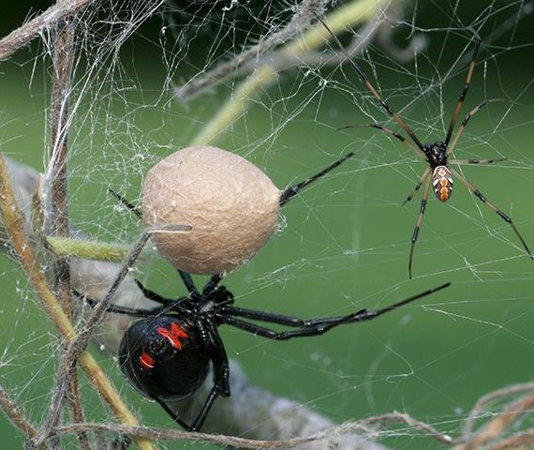Learn About These Small & Dangerous Pests
Ticks are external parasites that latch onto mammals in order to feed on their blood. As they feed, they can transmit a number of harmful diseases, and once on the skin, they can be difficult to get off. Across the nation, the two biggest tick threats facing home and pet owners are deer ticks and dog ticks.
Deer Ticks
Also known as “black-legged ticks”, deer ticks are named for their preferred animal hosts: white tail deer. Deer ticks can be found across the eastern half of the United States but are primarily concentrated in the Northeast, Central U.S., and across the Atlantic coast.
Deer ticks have small orange-brown bodies about 1/8 of an inch long and eight black legs which give them their nickname. Males are slightly smaller than females. After a blood meal, deer ticks’ abdomens become engorged and darker in coloration.
Deer ticks have no wings and cannot fly but have strong legs which they use to get onto the backs of the much larger animals they prey on. Deer ticks typically hide in the tall grass along fence lines or foot trails where animal traffic is heavy in order to jump onto unsuspecting animals as they pass by.
Are Deer Ticks Dangerous?
Deer ticks are quite dangerous to humans and pets they interact with. While they are primarily notorious for being the transmission vector for Lyme disease into dogs and cats, they are also known to transmit anaplasmosis, babesiosis, ehrlichiosis, Powassan virus, Rocky Mountain spotted fever, and more.
Why Do I Have a Deer Tick Problem?
Deer ticks are primarily brought into yards and around homes on the back of the deer and other animals that they feed on in the wild. If you have tall grass around your home, it is very likely that your cat or dog might have picked up ticks while outside. Beyond white-tailed deer, deer ticks also prey on wildlife like skunks, raccoons, opossums, mice, rats, and squirrels. If you have a heavy wildlife presence around your yard, chances are high that you’ll have a heavy deer tick presence as well.
How Do I Get Rid of Deer Ticks?
While you can help prevent deer ticks in your yard by keeping the grass cut low and removing weeds, clutter, and other debris from the yard that they could use as nesting sites, once they’ve gotten into your yard and onto your pets, it may be time to call a professional for help.
Pestmaster® technicians use expert tools and techniques to eliminate any ticks currently in your yard, while reducing potential tick harborage sites to stop infestations from cropping up again. Keep your family and pets safe from ticks with help from Pestmaster®. Contact us today for more information.
Dog Ticks
American dog ticks are a common tick species found only in North America. As their name suggests, dog ticks primarily prey on dogs, though they will also attack cats, humans, and any other mammals they come into contact with.

Dog ticks are typically about 1/4 of an inch long but can grow to be much larger after feeding, with females growing to over 1/2 of an inch long while engorged. Adults have eight legs and are brown with white or gray markings along their bodies.
Are Dog Ticks Dangerous?
While they rarely prey on humans, dog ticks are nevertheless capable of transmitting a number of diseases, including tularemia and Rocky Mountain spotted fever. Dog tick bites are known to cause itching, fever, rash, and even paralysis in some cases.
Why Do I Have a Dog Tick Problem?
Dog ticks thrive in tall grass, where they can easily jump onto passing animals. If you have outdoor pets, they could easily pick up ticks while moving around in your yard. Likewise, if you live near forested areas, dog ticks could have gotten into your yard on the back of rabbits, mice, squirrels, or other wildlife living in close proximity to your home.
How Do I Get Rid of Dog Ticks?
Unfortunately, once dog ticks have infested your yard and gotten onto your pets, there is little most homeowners can do to get rid of them alone. In the event of an infestation, calling a professional to help eliminate your tick problem and keep it from coming back is always the best course of action.
At Pestmaster®, we have decades of keeping pets and people across the United States tick-free. Using the best tools and technicians in the industry, no matter the size of your tick problem, we have what it takes to make it a thing of the past. Contact us today for more information about how a professional treatment can keep you tick-free now and into the future.
If you have a deer or dog tick problem in your property, contact your local Pestmaster® pest control team for a solution.
.png)




